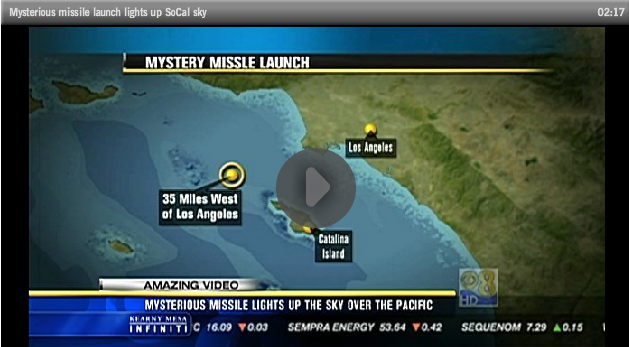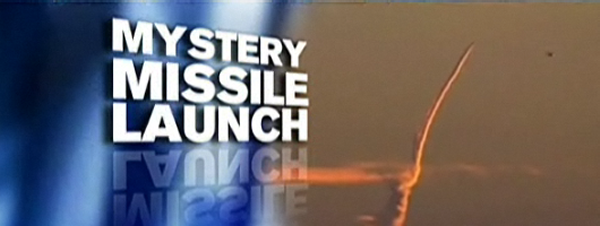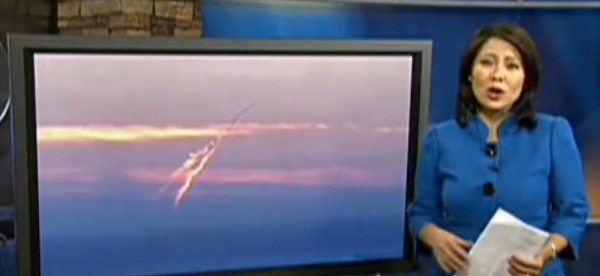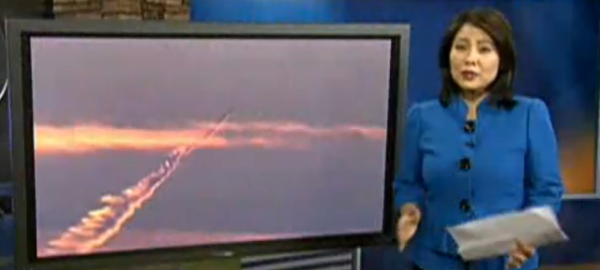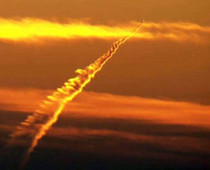|
.. |
|||||
|
33° 15' 0'' N, 119° 30' 0" W ..
San Nicolas Island San Nicolas Island [ a.k.a. San Nic and SNI], is the most northwesterly of the four southern Channel Islands. Like its eastern neighbor San Clemente Island, San Nicolas is a US Navy owned and operated island. Located 65 NM southwest of the Point Mugu complex, San Nicolas Island is the cornerstone in the Sea Range capabilities. Because of its instrumentation, isolated environment, shoreline characteristics, San Nicolas Island is ideal for conducting test and training exercises. Because of its isolated environment and shoreline characteristics, SNI is ideal for providing littoral warfare training, including tri-service and theater warfare exercises. It is also an excellent environment for conducting classified operations. SNI is a Navy owned and operated facility used as an instrumentation site. SNI is the cornerstone in the Sea Range capabilities because of its land mass and depth of surrounding waters. The main support facilities include a 10,000 foot runway, an air terminal, housing, a power plant, a fuel farm and other necessary base support functions. The main San Nicolas Island complex provides complete housing, dining, recreation, transportation, and public works support. Project billeting and logistic support is also available on the island. San Nicolas Island Navy Outlying Field is capable of supporting C-5's, the 10,000 ft runway, 2 hangers, and associated airfield support facilities are located near the southwest edge of a 500 ft mesa. The runway is lighted and equipped with arresting gear and has a ground control approach systems (ILS). The Barge Landing Area beach landing area is used to barge cargo to large or bulky for aircraft. Cargo can be off-loaded and trucked to the main compound or one of the many project areas. Air Resorts has two contracts with the U.S. Navy: F11626-93-D-0032
and F11626-94-D-0018. Under one contract, Air Resorts has operated the
non-TCAS equipped CV-440 aircraft from Pt. Mugu Naval Air Weapons Station
(NAWS), California to San Nicholas Island Navy Outlying Field (NOLF), California.
On the other contract, the aircraft have operated from North Island Naval
Air Station (NAS), California to San Clemente Island Naval Auxiliary Landing
Field (NALF), California. The usual alternate for the San Nicholas route
is Pt. Mugu, and for San Clemente
The San Nicolas Island Vandal Launch Pad launch complex is capable of supporting missile (Tomahawk & RAM) and missile targets (Vandal) launches. Launch complex's, ordnance handling, and a remote/secure environment provides an ideal location for weapons T&E. Many of the targets routinely used on the Sea Range (the BQM-34 and BQM-74 series and the MQM-8G) are launched from either the Point Mugu Surface Launch Complex at Building 55 or from additional specialized launch facilities on San Nicolas Island. The west end of San Nicolas Island provides a secured area for missile targets and is often used for SLAM and land attach missile operations. The Self Defense Test Ship (SDTS) is a remote controlled ship with SeaSparrow, RAM, and CWIS defense systems and various target acquisition systems. It provides an open-ocean, integrated, self-defense platform without the safety constraints associated with a manned ship. San Nicolas Island has numerous radars including three FPS-16 and two RIR-716 tracking radars, and one FPS-114 surface and one ARSR-3 air route surveillance radars. SNI is instrumented with metric tracking and surveillance radars, Global Positioning System (GPS) receivers, optics, telemetry, and communications necessary to support long range and over-the-horizon weapons testing, Fleet training and Theater Missile Defense exercises. SNI instrumentation also supports InterContinental Ballistic Missile (ICBM) and Polar satellite launches from the Western Range at VAFB. In addition, frequency monitoring, meteorological measurement systems and ordnance and launching facilities are available. Capabilities include launch of subscale and unmanned full-scale targets and launch sites for surface-launched weapons. San Nicolas Island has extensive telemetry collection facilities including three 30 ft, two 20 ft, one 8 ft, and 7 ft diameter antennas. Signals can be recorded and routed to the Point Mugu operations complex for best source selection. The SNI Telemetry Collection Facility also provides real-time reception, recording and relay of telemetry data. SNI supplies this telemetry data to Point Mugu for processing and display. Telemetry signals are received through land-based antennas located at SNI and sent in real-time by a fiber optic cable and/or microwave to Point Mugu. The best source signals are then sent by fiber optic cable to the TDC, located in the ROC for real-time processing and display. The SNI telemetry facilities are ideally located to support operations throughout the Sea Range as well as strategic and space launches from the Western Range (WR), Vandenberg Air Force Base (VAFB). The capability to record and display Miss Distance Indication (MDI) and video Doppler data is also available. Nearly all major users of the Sea Range rely on telemetry support from SNI. In Sept 2002 it was announced that the contract for a new pier at SNI had been awarded to Nova Group, Inc for $11,500,000. Currently, barges that bring supplies to the island are landed on the beach and are routinely delayed due to weather and sea conditions. The barge delays cause vital military testing and training on the NAVAIR Weapons Division Sea Range to slip. The new pier will significantly reduce the delays and impacts on the growing population of seals and sea lions that breed and pup in the area. Contract Number N68711-02-C-2004 was awarded by the Southwest Division, Naval Facilities Engineering Command, San Diego, with assistance from the NAVAIR Weapons Division, and the Naval Facilities Engineering Service Center. The contract includes the design and construction of a 460 foot long pier including mooring systems and a ramp to facilitate offloading the barges. A new operations building, and transit shed for cargo are also included. The pier will be built on the southeast end of the island in an area called Daytona Beach. Design is underway, with construction expected to be complete in Spring 2004. Once the pier is completed, barges will be able to pull up to a horizontal, mechanical ramp that will lower from deck elevation to water level for roll-on roll-off cargo transfer. As of September 22, 2004, construction was under way on the world’s first open-ocean, roll-on roll-off pier off the California coast. The $12 million construction project on Naval Outlying Landing Field San Nicolas Island is meant to enable the Navy to safely offload equipment and supplies for use by the island’s Navy and civilian population. Prior to the pier's construction, supplies were brought aboard the island by being offloaded right on the beach, using an old pontoon system where the barge had to be beached on the shore. One drawback with that method was the small window available resulting from the tides to safely onload and offload trucks and equipment from the barge. The contractor for the project, Nova Group of Napa, Calif., precast more than 80 percent of the concrete for the pier and dolphin structures, including pile caps, planks, piles, and pile caps for dolphins. The pier and dolphin structures are approximately 640 feet long, with a deck elevation that varies from 10 feet to 29 feet. SOURCE: Global Security |
|||||
|
...
Mysterious missile lights up
the sky over the Pacific
Pacific Ocean (CBS 8)- A mysterious missile launch off the southern California coast was caught on video Monday evening by a KCBS news helicopter. The spectacular contrail could easily be seen up in Los Angeles, but who launched this missile and why, remain a mystery for now. The magnificent images were captured from the KCBS chopper around 5pm. The location of the missile was described as west of Los Angeles, north of Catalina Island, and approximately 35 miles out to sea. A Navy spokesperson tells News 8, this wasn't its missile. He said there was no Navy activity reported in that part of the region. On Friday, November 5, Vandenberg Air Force Base launched a Delta II rocket, carrying the Thales Alenia Space-Italia COSMO SkyMed satellite, but a sergeant at the base tells News 8, there have been no launches since then. News 8 showed the video to Robert Ellsworth, former U.S. Ambassador to NATO and a former Deputy Secretary of Defense. He said it didn't appear to be a Tomahawk missile and said it would be safest to wait for definitive answers to come from the military. Based on pure speculation, however, Ambassador Ellsworth said, with President Obama in Asia, perhaps this could have been a show of our military muscle. "It could be a test firing of an intercontinental ballistic missile from an underwater submarine, to demonstrate mainly to Asia, that we can do that," he said, stressing that it was just a theory. SOURCE: 760KFMB-TV News Related Links:
|
|||||
|
|||||
| LOS ANGELES, Nov. 9, 2010
Mystery Missile Launch Seen off Calif. Coast Military Mum on Nature of "Big Missile" Rising Out of Pacific - a Possible Show of U.S. Military Might (CBS) A mysterious missile launch off the southern California coast was caught by CBS affiliate KCBS's cameras Monday night, and officials are staying tight-lipped over the nature of the projectile. CBS station KFMB put in calls to the Navy and Air Force Monday night about the striking launch off the coast of Los Angeles, which was easily visible from the coast, but the military has said nothing about the launch. KFMB showed video of the apparent missile to former U.S. Ambassador to NATO Robert Ellsworth, who is also a former Deputy Secretary of Defense, to get his thoughts. Scroll down for KFMB video showing the launch. "It's spectacular… It takes people's breath away," said Ellsworth, calling the projectile, "a big missile". Magnificent images were captured by the KCBS news helicopter in L.A. around sunset Monday evening. The location of the missile was about 35 miles out to sea, west of L.A. and north of Catalina Island. A Navy spokesperson told KFMB it wasn't their missile. He said there was no Navy activity reported in the area Monday evening. On Friday night, Vandenberg Air Force Base, in California, launched a Delta II rocket, carrying an Italian satellite into orbit, but a sergeant at the base told KFMB there had been no launches since then. Ellsworth urged American to wait for definitive answers to come from the military. When asked, however, what he thought it might be, the former ambassador said it could possibly have been a missile test timed as a demonstration of American military might as President Obama tours Asia. "It could be a test-firing of an intercontinental ballistic missile from a submarine … to demonstrate, mainly to Asia, that we can do that," speculated Ellsworth. Ellsworth said such tests were carried out in the Atlantic to demonstrate America's power to the Soviets, when there was a Soviet Union, but he doesn't believe an ICBM has previously been tested by the U.S. over the Pacific. Officially, at least, the projectile remains a mystery missile. SOURCE: Mystery Missile Launch Seen off Calif. Coast
|
|||||
| LOS ANGELES, Nov. 9, 2010
Pentagon Can't Explain "Missile" off California Military Investigating Video that Shows Mystery Object Shooting into Sky (CBS/AP) The Pentagon Tuesday said it was trying to determine if a missile was launched Monday off the coast of Southern California and who might have launched it. Spokesmen for the Navy, Air Force, Defense Department and North American Aerospace Defense Command said they were looking into a video posted on the CBS News website that appears to show a rocket or some other object shooting up into the sky and leaving a large contrail over the Pacific Ocean. The video was shot by a CBS affiliate KCBS' helicopter, the station said Tuesday. "Nobody within the Department of Defense that we've reached out to has been able to explain what this contrail is, where it came from," Pentagon spokesman Col. Dave Lapan said. "So far, we've come up empty with any explanation." Lapan said officials are talking to the Air Force, Navy and NORAD as well as civilian authorities who control and monitor air space. "Right now, all indications are that there was not (Department of Defense) involvement in this," Lapan said, adding that some object might have been launched by a private company. CBS station KFMB showed video of the apparent missile to former U.S. Ambassador to NATO Robert Ellsworth, who is also a former Deputy Secretary of Defense, to get his thoughts. Scroll down for KFMB video showing the launch. "It's spectacular… It takes people's breath away," said Ellsworth, calling the projectile, "a big missile". Officials had no information to make them suspect that the action was taken by any U.S. adversary. "At this point, until we know more information about what it may have been, there is not alarm," Lapan said. "But that could change depending on what we find out." |
|||||
|
..
November 9th, 2010 A trail lit up the western skies across Southern California on Monday evening and many speculate a missile was launched from behind Catalina Island. However, Southern California's top meteorologist Kevin Martin from the Southern California Weather Authority states it was nothing but a contrail from an airliner. "We see this often when the flights come at the right time, however some people are just out to witness it at the right time", says Martin. "We had strong winds up there as well as really cold temperatures from a passing storm system. This also had an area of upper level moisture at 250 to 200mb, where airliners fly". Martin described the event as too slow for a missile launch. SOURCE: beforeitsnews.com |
|||||
|
ANOTHER missile launch soars over California: The Navy launches a second nuclear-capable Trident on day two of dramatic war games that have sparked a host of conspiracy theories 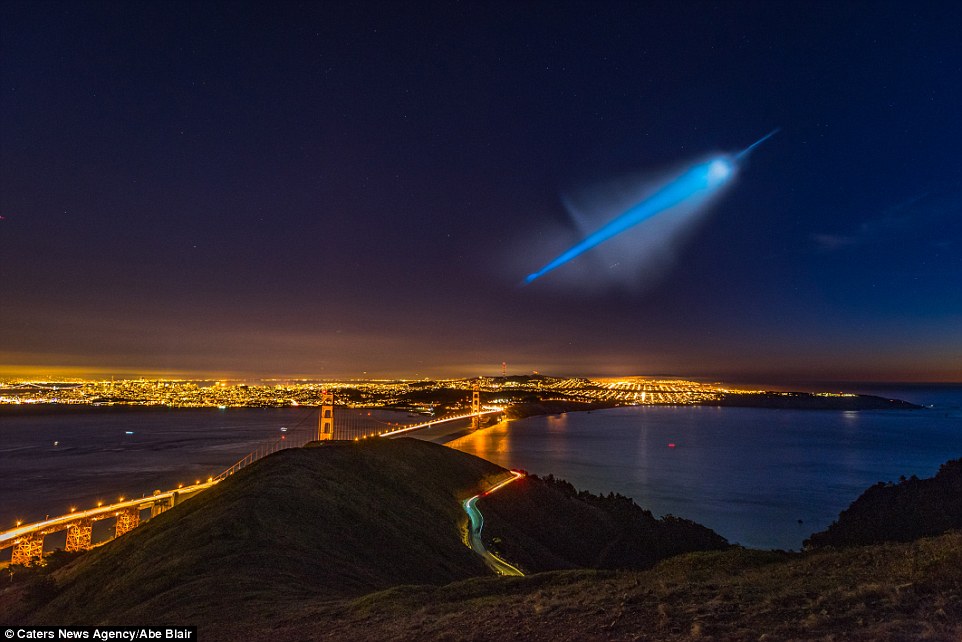 Surprise: Photographer Abe Blair, 36, was taking pictures of the San Francisco
skyline when a dazzling blue light streaked across the sky The US Navy launched a second and final
missile from a submarine off the southern California coast as part of a
planned exercise on Monday afternoon, officials said.
The second test launch of the Trident II (D5) missile from a ballistic
submarine occurred with much less commotion that Saturday night’s
launch, which gave Twitter its very own nuclear meltdown with thousands
speculating that it was a UFO.
But a Navy spokesman confirmed that it was in fact an unarmed Trident II (D5) missile that was fired from the USS Kentucky, a ballistic missile submarine. ‘It’s important that we test these missiles for our national security,’ John M Daniels, a spokesman for the secretive Strategic Systems Programs office that oversees nuclear-tipped missiles in the Navy, told the Los Angeles Times. ‘We don’t announce future launches, but this is it for any time soon.’ Because it occurred in broad daylight, Monday afternoon's launch was likely far less visible to onlookers than Saturday night's stunning light show. The Kentucky conducted the two launches to certify the readiness of the submarine’s crew and strategic weapons before it returns to operational availability. 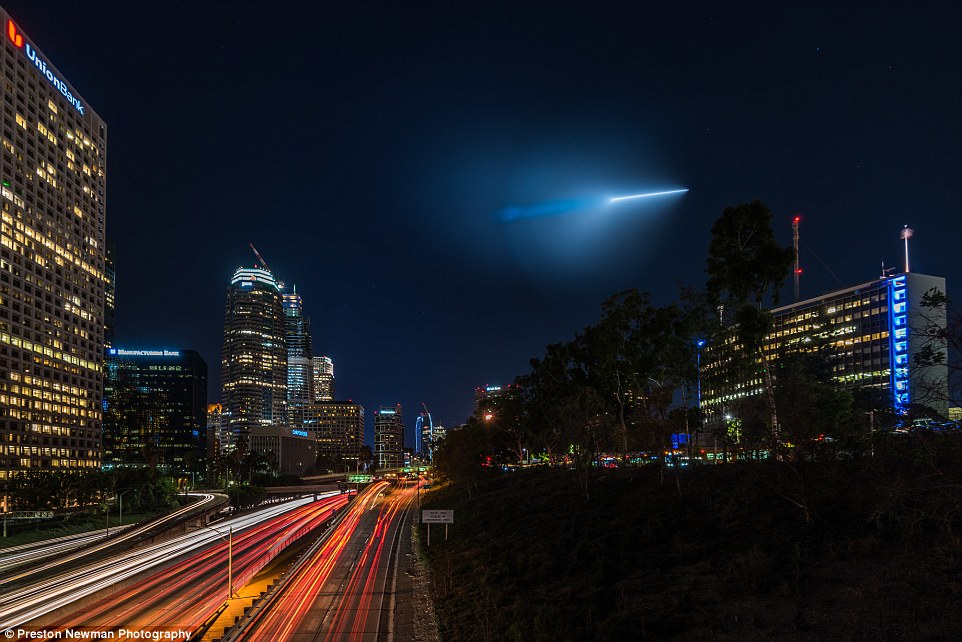 The Navy fired a nuclear-capable
missile from a submarine off the coast of California, creating a
mysterious streak (pictured) in the sky that sparked alarm on the West
coast. Photographer Preston Newman (on Instagram at @Newman_Photos) was
on a photo shoot at the time and captured the streak
|
|||||
| FAIR USE NOTICE: This page contains copyrighted material the use of which has not been specifically authorized by the copyright owner. Pegasus Research Consortium distributes this material without profit to those who have expressed a prior interest in receiving the included information for research and educational purposes. We believe this constitutes a fair use of any such copyrighted material as provided for in 17 U.S.C § 107. If you wish to use copyrighted material from this site for purposes of your own that go beyond fair use, you must obtain permission from the copyright owner. | |||||
|
|

